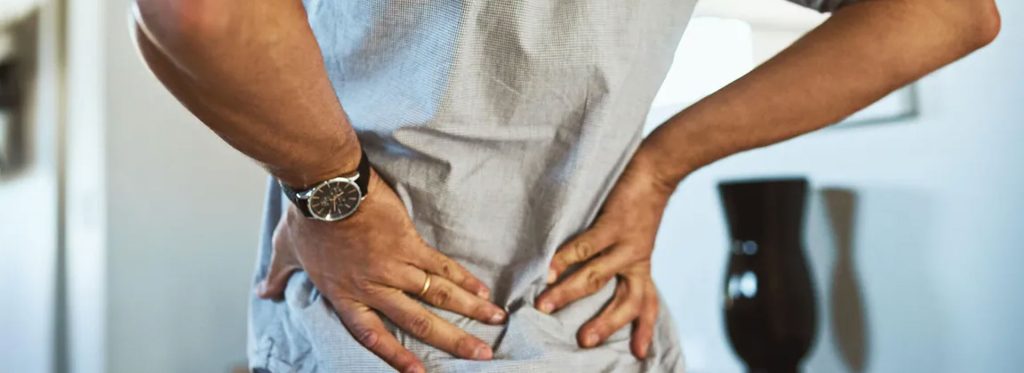Neck Injuries Car Accident
After a car accident: Neck pain diagnosis
Cervical Spondylolisthesis The force of an accident may cause one or more of your vertebrae to slip out of alignment or dislocate. The resulting injury ranges from mild to severe. A vertebra may compress nerves or the spinal cord with slippage, causing pain to radiate to the back of your head or shoulders.
Slipped or herniated disc The intervertebral discs in your cervical spine are jelly-filled and absorb shock to protect your vertebrae. During a collision, the discs may slip, rupture, herniate or bulge. Slippage may cause the disc to compress spinal cord nerves. In contrast, a bulge or rupture is when the jelly-like substance pushes out of the disc, crowding your vertebrae and compressing nerves. Disc injuries can cause pain in the neck or arms and/or numbness from the injury itself and from pinching or squeezing nerves. It’s common in side-impact crashes.
Neck sprain or strain Neck strains and sprains may present similar symptoms, but they’re different. A strain damages the facet joint, tendons, tissue that connects your bones to muscles, or injures your muscles. In contrast, sprains are torn ligaments, the soft tissue that connects bones to other bones. The result is often pain when moving your head or upper neck, reduced mobility, or muscle spasms.
Pinched nerve Many neck injuries can result in a pinched nerve. Damaged tissues, bones, discs, or tendons shift out of place and rub against or compress surrounding nerves causing severe pain and/or tingling and numbness. Pinched nerves are often associated with a muscle strain, sprain, or disc damage.
Stiff muscles and tendons Neck pain caused by a car accident often leads to stiffness in the neck, which you may call a “crick in the neck.” It may hurt to move your head or keep your neck in the same position for a long time.
Facet joint injury Facet joints allow you to move your head and neck area freely. The facet joints in the neck also stabilize your head and neck. After a collision, your facet joints may get inflamed or irritated, resulting in pain.
Neck fracture or compression A fractured cervical spine, or a broken neck, is a serious injury requiring immediate medical care. A neck fracture means one or more of the seven neck bones is broken or has a crack. It can cause further damage to your spinal cord nerves, called a spinal cord injury. Paralysis or death may occur from a broken neck.
Cuts and lacerations Debris from a car accident may gouge your neck area. Superficial cuts may cause bruising and bleeding. However, lacerations are deep cuts that may require stitches and can damage neck tendons and ligaments.
Muscle Spasms Spasms are common car accident neck injury symptoms. But you may also experience twinges in your shoulders, back, and arms. In most cases, cramps occur because your muscles tensed up or were overstretched. As a result, swelling and inflammation occur, affecting the nerves around the muscle. [8] Your body attempts to protect hurt muscles by contracting and immobilizing the area. Your muscles may tighten and loosen in rapid succession, causing a large amount of pain. Since it takes time for inflammation to build up, delayed neck pain after a car accident often includes spasms.
Types Of Back Pain
Immediately following a car accident, you should be checked out by a physician. They may use X-rays, computed tomography (CT) scans, or magnetic resonance imaging (MRI) to check for damaged soft tissues. Since neck injuries may also cause a concussion, doctors may monitor you for concussion symptoms, such as confusion, sleepiness, or trouble talking. In most cases, a doctor will refer you to an orthopedic surgeon. This is because many symptoms if left untreated, can cause chronic pain. People may experience whiplash-associated disorders (WAD) for many years after an accident.
Resources
Services
Contact Us Today

Non-surgical treatment options
Immediately following a car accident, you should be checked out by a physician. They may use X-rays, computed tomography (CT) scans, or magnetic resonance imaging (MRI) to check for damaged soft tissues. Since neck injuries may also cause a concussion, doctors may monitor you for concussion symptoms, such as confusion, sleepiness, or trouble talking. In most cases, a doctor will refer you to an orthopedic surgeon. This is because many symptoms if left untreated, can cause chronic pain. People may experience whiplash-associated disorders (WAD) for many years after an accident.
After a car accident: Neck pain diagnosis
Your medical practitioner may recommend several non-surgical treatment options that you do at home or during a visit. If you feel discomfort, ask your medical provider how to relieve neck pain after a car accident. Standard neck injury treatment options include:
• Apply ice to your neck for a couple of days following by moist heat after the swelling subsides
• Take pain relievers, like acetaminophen or non-steroidal anti-inflammatory drugs (NSAIDs)
• Short-term use of a neck brace or collar
• Gentle stretching, massage, or chiropractic techniques
• Physical therapy
- Epidural steroid injections (ESI)
- Facet and medial branch blocks
- Radiofrequency ablation (FRA)
- Stem cell therapy
- Spinal cord stimulator
Treatment for neck pain after a wreck
To avoid long-term complications from a neck injury, seeking immediate care is necessary. Although auto accident recovery can occur within a few weeks, some circumstances may lengthen the treatment and recovery period, such as:
- Not receiving immediate care after an injury to the neck
- Severe damage to neck discs, joints, or ligaments
- A spinal fracture
- Re-injuring the neck while still in recovery
- Built-up inflammation
Surgical treatment options
For severe neck injuries, surgical treatment may be necessary. There are many types of treatment options that may be in or outpatient procedures. Your doctor will review your options with you to determine the best way to restore mobility and get you back to regular activities. Some surgical treatment options include:
Kyphoplasty: An outpatient procedure for fractured spine vertebrae.
Microdiscectomy: A surgery that removes a disc or bone spur
Fusion surgery: A process that fuses discs to stabilize the neck.
Robotic spine surgery: A surgical treatment for lumbar stenosis.
Back Pain Injury
Located in the Twin Cities and serving the entire Minneapolis – Saint Paul Metro Areas

Let Get Started
Don’t wait for the pain to worsen, take action now and consult Shingle Creek Medical Group. Recognizing your pain triggers is an essential first step towards effective management. These may include prolonged periods of sitting or standing, lifting heavy objects, or sudden movements that put stress on your back. In terms of medication options, nonsteroidal anti-inflammatory drugs (NSAIDs) and muscle relaxants are commonly prescribed for short-term relief of acute low back pain. However, it’s crucial to understand that these medications only mask the symptoms and don’t address the underlying cause. For chronic back pain sufferers, opioids may be considered but should be used with extreme caution due to their high risk of dependency. Recent research published in The Spine Journal suggests that cognitive behavioral therapy can help manage chronic back pain by changing the way you respond to discomfort instead of merely treating it. Furthermore, alternative therapies such as acupuncture and chiropractic adjustments have shown promise in some studies.
Frequently Asked Questions
You’re asking about common causes, right? Underlying diseases like osteoporosis or arthritis can impact your health. Psychological factors also influence it; stress and anxiety often manifest physically, potentially leading to discomfort in various areas.
To avoid future discomfort, you’ll need to focus on posture correction and invest in ergonomic furniture. Ensuring you’re sitting and standing correctly can reduce strain. Ergonomic furniture supports your body optimally.
To avoid future discomfort, you’ll need to focus on posture correction and invest in ergonomic furniture. Ensuring you’re sitting and standing correctly can reduce strain. Ergonomic furniture supports your body optimally.
To reduce discomfort, you can make dietary adjustments to manage inflammation and incorporate stress management techniques. Both changes don’t just enhance general health, but also serve in mitigating issues causing physical unease.
Yes, exercises are beneficial. However, you must dispel back pain myths and understand the mind-body connection. Pilates and yoga improve strength and flexibility while fostering mental wellness, aiding in managing your discomfort effectively.

Are you looking for non-invasive treatment options for your auto accident injury? Shingle Creek Medical treats many different types of car accident injuries, including whiplash, sprains, strains, as well as back, neck, and joint injuries that can result from low speed, rear-end collisions schedule an appointment.

